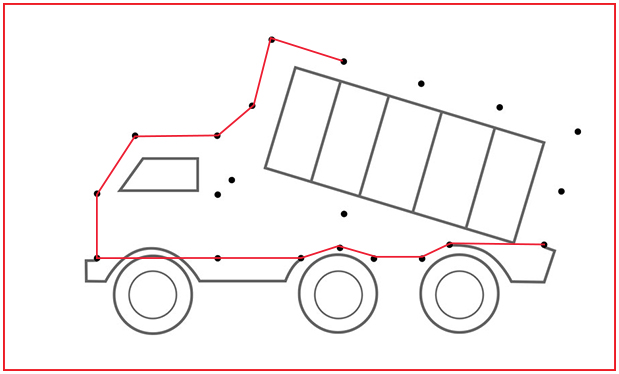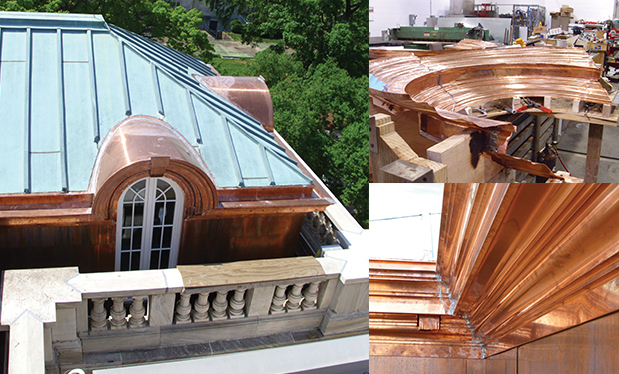NRCA recently published an Industry Issue Update for members that analyzed energy savings and cost paybacks stemming from energy code-mandated increases in R-values for low-slope roof assemblies. The findings and NRCA's conclusions are summarized here.
Energy code requirements
The building envelope thermal requirements contained in the International Energy Conservation Code,® 2012 Edition (IECC 2012) provide prescriptive minimum thermal insulation (R-value) requirements for building envelope components, including roof assemblies.
Comparing IECC 2012's values to those of the International Energy Conservation Code, 2009 Edition (IECC 2009) reveals minimum required R-values have increased from R-5 to R-10 depending on specific climate zones and building (roof) assembly configurations.
Similarly, comparing the new International Energy Conservation Code, 2015 Edition's (IECC 2015's) values to IECC 2012's edition, IECC 2015 includes increases of an additional R-5 for some locations.
It is important to note the International Code Council (ICC), which develops and publishes IECC, doesn't thoroughly consider the cost implications of making its codes more stringent, such as increasing minimum R-value requirements.
NRCA analysis
NRCA analyzed energy savings and cost paybacks of roof assembly R-value increases in 16 U.S. cities representative of the energy codes' eight U.S. climate zones.
A hypothetical project consisting of a roof assembly with insulation above deck on a 10,000-square-foot single-story building was considered. Construction cost increases and corresponding theoretical energy-savings information were developed by changing the hypothetical roof assembly in each city from R-10 to R-15, R-15 to R-20, R-20 to R-25 and R-25 to R-30. City-specific current energy costs (natural gas for heating and electricity for cooling) were used in the analysis. Cost payback length was determined by dividing the incremental increased cost for adding R-value by the calculated energy cost savings.
The analysis revealed insulation increases from R-10 to R-15 have the relatively shortest paybacks; they range from 3.7 years to 12.1 years. Conversely, when the increases were from R-20 to R-25 and R-25 to R-30, paybacks ranged from 12.4 years to 13.3 years. Cost payback lengths vary by a city's climatic conditions and heating and cooling energy costs. For example, energy costs significantly vary between Boston and Denver, resulting in wide variances in cost paybacks even when comparing cities in the same climate zone.
Considering current heating and cooling costs, NRCA's analysis concludes R-value increases resulting in cost payback lengths approaching or beyond a roof assembly's anticipated life span are not financially justifiable to building owners. A 2004 study conducted by The Roofing Industry Alliance for Progress revealed the average life span for a low-slope roof system in the U.S. is 17.4 years.
As heating and cooling energy costs increase, shorter cost payback lengths will occur and may better justify the current energy codes' high minimum R-value requirements.
You can determine theoretical heating and cooling costs (and savings) for roof assembly configurations in specific cities using NRCA's EnergyWise Roof Calculator at energywise.nrca.net.
NRCA's conclusions
NRCA considers a roof assembly's thermal performance to be an important attribute to overall performance. However, based on NRCA's analysis, in many instances the energy codes' current high minimum R-value requirements do not provide building owners and operators adequate energy cost savings to justify additional construction costs.
NRCA cautions against making representations of cost savings that can result from adding high insulation R-values.
NRCA recommends roof assembly designers provide designs that comply with the minimum requirements for the specific energy code applicable in the jurisdiction where a building is located.
Additional information about complying with the roofing-related requirements is provided in Guidelines for Complying With Energy Code Requirements for Roof Assemblies: International Energy Conservation Code, 2009 and 2012 Editions, which is available at shop.nrca.net.
Mark S. Graham is NRCA's vice president of technical services.



